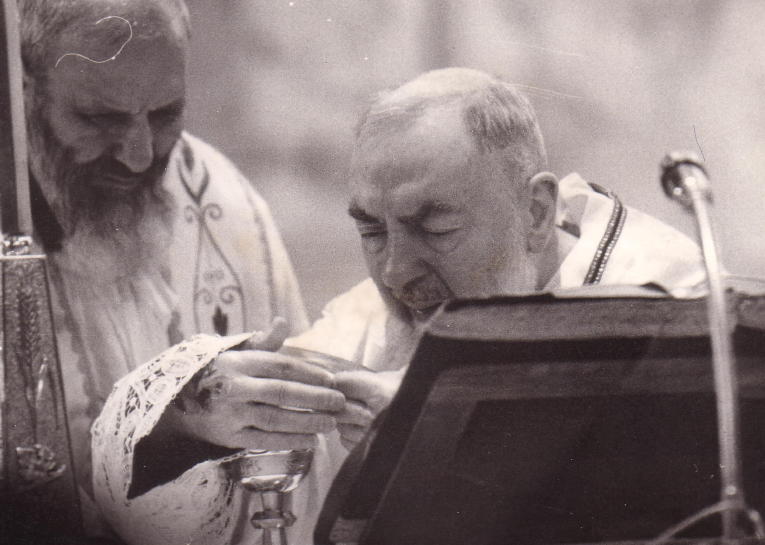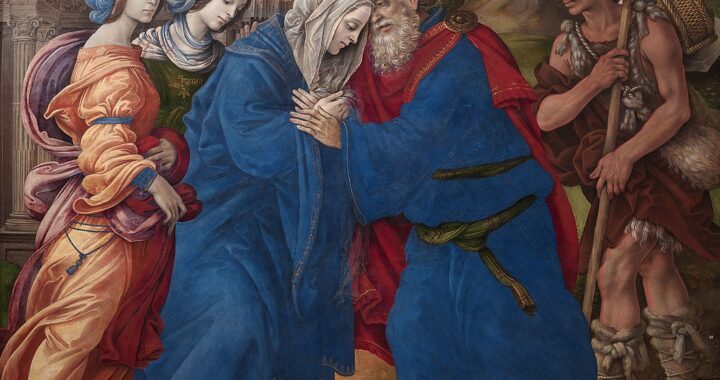
Most Catholics have heard of Padre Pio, and many of those Catholics know a lot about him.
They know that he was born Francesco Forgione in Pietrelcina, Italy, in 1887, that he became a Franciscan priest, that he received the stigmata, and that he had become internationally known as a holy man by the time of his death on September 23, 1968. But there are many facts that most people don’t know about the man now called Saint Pio of Pietrelcina.
People often forget that Francesco grew up in a peasant family during tough times. His father had to travel to America—like so many other Italians around the turn of the twentieth century—because of unemployment and economic instability in Italy. His parents, recognizing their son’s devotion, particularly needed money to provide for Pio’s education, which was essential if he was going to join the Franciscan order, which is what he believed God was calling him to do.
Even as a child, Pio suffered from constant medical problems. Vomiting, diarrhea, fever, migraines, insomnia, fainting—he experienced these conditions repeatedly throughout his life. After he entered the Capuchin Franciscan order as a young man, he was sent to different friaries, but each time he crossed the threshold of a new one, he became so ill that doctors often sent him home. His body temperature was recorded at 120°F and higher; for most people, a fever of 107°F is considered fatal.
In hindsight, some have proposed that there was a preternatural cause for Pio’s unusual symptoms; that is, the evil one recognized how many souls would be saved if this Italian teenager devoted his life to Jesus Christ as a priest and was trying to deter him. Padre Pio led many wandering souls back to Christ through the confessional during his lifetime, even though he sometimes seemed harsh with penitents who tried to skip over some of their sins during confession.
In 1925, Padre Pio started his first hospital in an abandoned convent with just a few beds and a small clinic. From that simple beginning, a large hospital gradually arose in San Giovanni Rotondo, all under Pio’s guidance. The hospital’s budget gradually rose too, which is why Pope Pius XII had to grant Pio a dispensation of his Franciscan vow of poverty. That was necessary so that the friar could oversee the administration of the hospital. But it was the experience of his own many illnesses that gave him such compassion for all who were sick.
One of the most famous aspects of Pio’s life is also one of the most misunderstood. From his earliest days as a Franciscan, other friars noticed inexplicable mystical phenomena occurring when Pio prayed. Many of his brother Franciscans later testified that they saw Pio levitate, fall into ecstasies, accurately predict future events, bilocate, and go without sleep and food (except for the Eucharist) for days at a time. In 1918, when he was only thirty-one years old, he received what is perhaps the most remarkable mystical gift: the stigmata, that is, the wounds of Christ.
Multiple medical doctors performed examinations of the wounds on Pio’s hands and feet for decades, but no natural cause could ever be determined. When Pio cut himself accidentally, for example, that wound would heal normally. So why didn’t his hands and feet do the same?
While it is easy for people today, Catholic or not, to claim that past reports of the stigmata simply hadn’t been scientifically investigated, Pio’s wounds certainly were. Doctors who examined Pio went away shrugging their shoulders, unable to explain where his wounds came from and why they wouldn’t heal. They also could not explain how Pio could survive on his self-imposed starvation diet, lose a cup of blood every day, and not even be anemic.
Saint Francis of Assisi is commonly accepted as the first person to have received the stigmata. This event occurred on September 17, 1224, two years before Francis died. Since that famous day, there have been many people who have claimed to receive the stigmata as well. While it is obvious that some have been liars or something worse (see Fr. Benedict Groeschel’s A Still, Small Voice), many others have claimed to receive the wounds of Christ and have lived holy lives. The table below lists men and women who have been canonized or beatified by the Church and who received these wounds, as verified by witnesses. Some, like Saint Rita of Cascia, received the marks of Jesus’ Crown of Thorns on their heads. Some, like Saint Catherine of Siena, could feel the wounds in their hands and feet, but they were not visible. Others, like Francis and Pio, bled from wounds that vividly remind every Catholic of Jesus Christ and His Crucifixion.
But the most important question to ask when considering the life of Saint Pio or any of these other holy men and women is: Why? Why would our Lord permit someone who loves Him to suffer so much?
To ask the question is to know the answer. The Lord loves us so profoundly that He chose to suffer and die on the Cross for us. Men and women like Pio, Francis, Rita, and Catherine learned to see suffering as a sign that they were drawing close to Christ, and they were able to rejoice, even in their pain, because of God’s presence in their souls.
While the rest of us may or may not receive amazing mystical gifts, we can trust that our Lord is present in our wounds and our trials, just as He was for Padre Pio.
| Birth-Death | Saints and Blesseds Who Received the Stigmata |
| 1181-1226 | Saint Francis of Assisi; founder of the Franciscan order; Italy.* |
| d. c. 1290 | Blessed Ida of Louvain; Cistercian nun; Belgium. |
| 1242-1312 | Blessed Christina of Stommeln; Beguine nun, Germany. |
| 1347-1380 | Saint Catherine of Siena; third order Dominican, Italy.* |
| 1386-1457 | Saint Rita of Cascia; widow and Augustinian nun; Italy.* |
| 1386-1480 | Blessed Elizabeth Achler; third order Franciscan; Switzerland. |
| 1443-1503 | Blessed Maddalena Panattieri; Sisters of Penitence nun; Italy. |
| 1449-1505 | Blessed Osanna Andreasi; Dominican Sisters of Penance nun; Italy. |
| 1457-1530 | Blessed Stephana de Quinzani; third order Dominican; Italy. |
| 1476-1544 | Blessed Lucy Broccadelli; third order Dominican; Italy. |
| 1486-1547 | Blessed Catarina Mattei; third order Dominican; Italy. |
| 1522-1590 | Saint Catherine de’ Ricci; third order Dominican; Italy. |
| 1560-1640 | Blessed Maria of Jesus López de Rivas; Discalced Carmelite nun; Spain. |
| 1606-1670 | Blessed Giovanna Maria Bonomo; Benedictine nun; Italy. |
| 1613-1670 | Saint Charles of Sezze; Franciscan religious brother; Italy. |
| 1660-1727 | Saint Veronica (Ursula) Giuliani; Capuchin Poor Clare nun; Italy.* |
| 1715-1791 | Saint Maria Francesca of the Five Wounds of Jesus (Anna Maria) Gallo; third order Franciscan; Italy. |
| 1774-1824 | Blessed Anne Catherine Emmerich; Augustinian canoness regular; Germany. |
| 1846-1878 | Saint Mary of Jesus Crucified Baouardy; Carmelite nun; Palestine.* |
| 1878-1905 | Saint Gemma Galgani; laywoman; Italy,* |
| 1882-1925 | Saint Anna Schäffer; laywoman; Germany. |
| 1876-1926 | Saint Mariam Thresia Chiramel Mankidiyan; Sisters of the Holy Family; India. |
| 1880-1952 | Blessed Edvige Carboni; third order Franciscan; Italy. |
| 1895-1961 | Blessed Elena Aiello; Minim Sister; Italy. |
| 1887-1968 | Saint Pio (Francesco) Forgione; Capuchin Franciscan priest; Italy.* |
| 1924-1980 | Blessed Maria Bolognesi; laywoman; Italy. |
